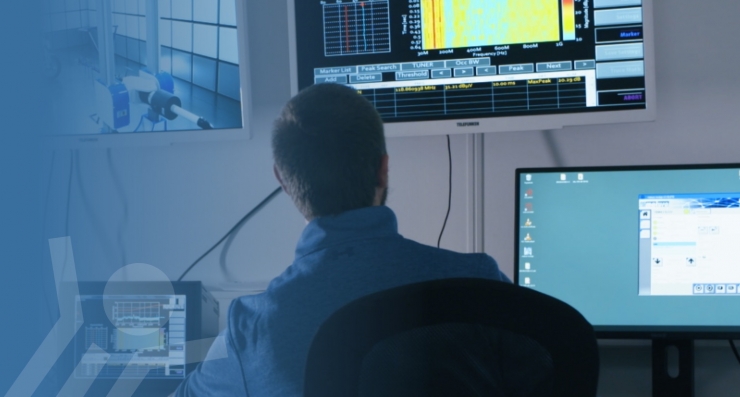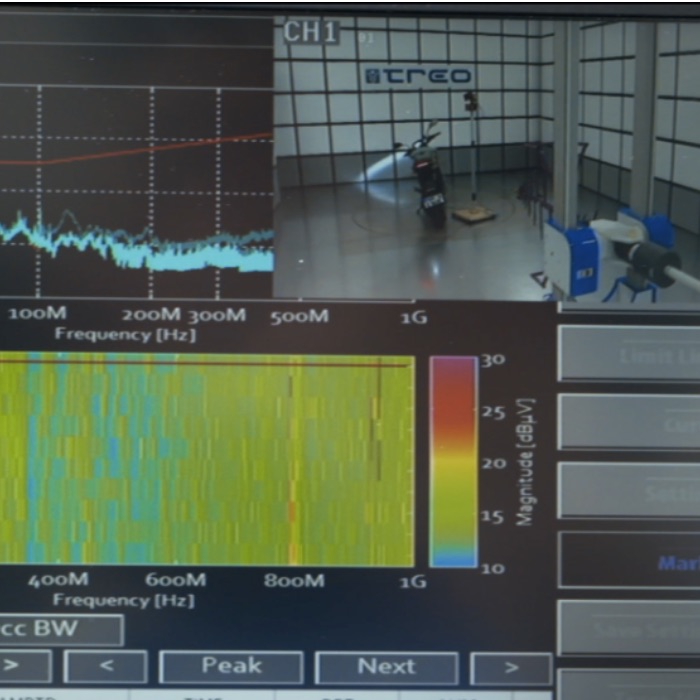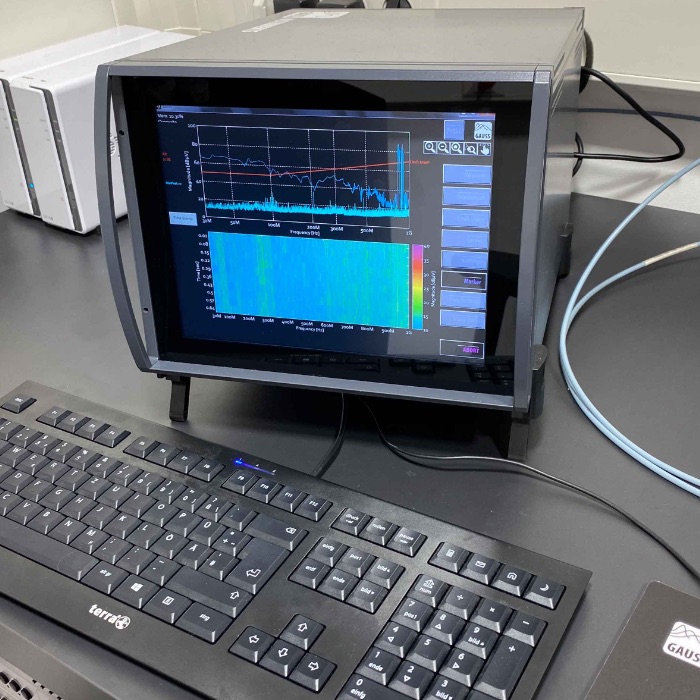Radiated emission
According to antenna theory, a conductor with a length of lambda/4 (where lambda is the wavelength) is an optimal antenna. At a frequency of 30 MHz, this corresponds to 2.5 m; at 1 GHz, it is only 7.5 cm.
With ever higher frequencies in modern electronics, the conductor tracks and internal connection cables are increasingly becoming potential antennas for the radiation of high-frequency energy. The permissible energy emission of a device depends on its operating environment. On ships, for example, the frequency range for maritime distress radio between 156 and 165 MHz is specially protected by strict limits. In the same way, the requirements for emissions are lower in a large industrial plant than in the more sensitive residential environment.
The standards and procedures in this area include the following:
- CISPR 16-2-3 – High-frequency fields
The radiated disturbance field strength in the frequency range between 9 kHz and 18 GHz is measured in an open area test site (OATS), a semi-absorber chamber (SAC) or a full absorber chamber (FAR). The magnetic component of the disturbance is usually measured at frequencies of up to 30 MHz.
For the electrical component, the quantity to be measured is the maximum electric field strength emitted by the test object as a function of the horizontal and vertical polarizations and at heights of 1 m to 4 m. Measurements are made at a horizontal distance of 3 m, 10 m or 30 m from the test object, whereby the test object must be rotated horizontally through all angles. For the measurement of the electric field strength, the height of the antenna above the reflective surface (except FAR) must be varied in order to obtain the highest amplitude at the test receiver, which occurs when the direct and the reflected beams are in phase.
- MIL-STD-461 RE101 – Radiated Emissions, Magnetic Field
This requirement is to limit the low-frequency magnetic fields generated by mains frequency harmonics in inductors in order to protect systems operating at very low frequencies, such as tuned receivers.
- MIL-STD-461 RE102 – Radiated Emissions, Electric Field
This requirement limits the electric field that a device may emit. In contrast to CISPR 16-2-3, this method involves measuring at a fixed distance of 1 m (i.e. in the near field). Since the impact of reflections from the floor of the measuring chamber can be neglected, no height scan is performed. To increase the reproducibility of measurements in the near field, this requirement very precisely specifies the measurement antennas to be used. This way, the results obtained in different laboratories can be compared very well.




Head of EMC Laboratory
Carsten Möller
B. Sc.
Testing? Treo
EMC testing areas:



